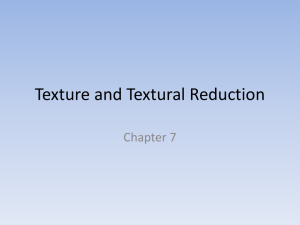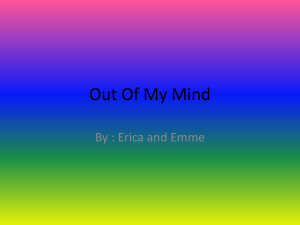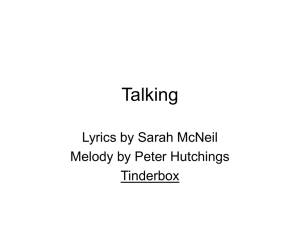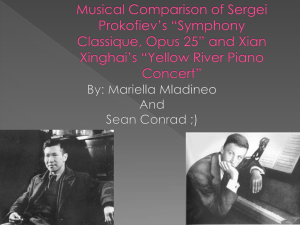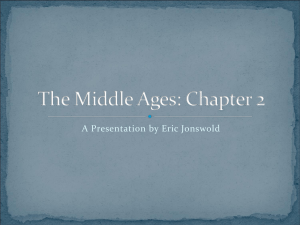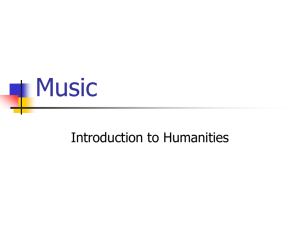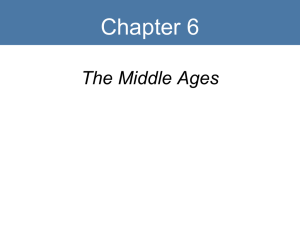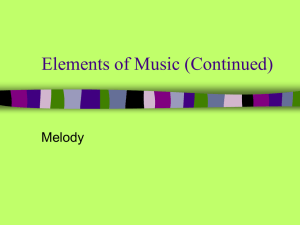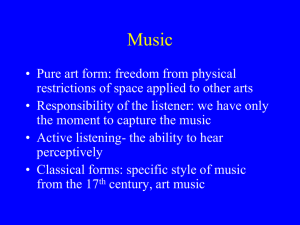Melody in Music: Contour, Range, and Phrases Explained
advertisement
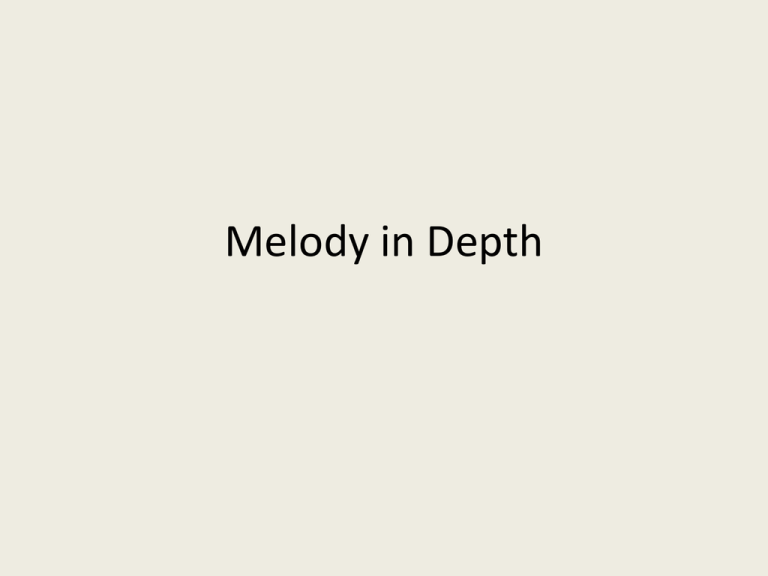
Melody in Depth • A melody is the line, or tune, in music. • Each melody is unique in contour (how it moves up and down) and in range, or span of pitches. • An interval is the distance between any two pitches. A melody that moves in small, connected intervals is conjunct, while one that moves by leaps is disjunct. Range: distance between highest and lowest note. The range can be narrow, as in children’s songs or very wide. Contour: The overall shape of a melody as it turns upward, downward, or remains static. This can be visualized as a line graph showing an ascending or descending line, an arch, or a wave Ode to Joy, Beethoven Symphony #9 Range: narrow (5-note span) Contour: wavelike Movement: conjunct Joy to the World, Traditional Range: medium (8-note span) Contour: descending Movement: conjunct, then a few leaps Star Spangled Banner Range: wide (10-note span) Contour: wavelike Movement: disjunct (many wide leaps) • The units that make up a melody are phrases; phrases end in resting places called cadences. • Cadences are a kind of musical punctuation and can be inconclusive like a comma or defined like a period. • If a melody has words, cadences often coincide with the text. audio More complex music can feature several simultaneous melodies. Sometimes the relative importance of one melody over the other is clear, and the added tune is called a countermelody Stars and Stripes Forever countermelody Tonight, from West Side Story, Bernstein Tonight, tonight, won’t be just any night, tonight there will be no morning star. Tonight, tonight, I’ll see my love tonight, and for us, stars will stop where they are. Today the minutes seem like hours, the hours go so slowly, and still the sky is light. Oh moon, grow bright, and make this endless day endless night. 1) Which term best describes the opening of the melody? •conjunct •disjunct •Static 2) How many melodic phrases, each ending with a sustained cadence note, are in this verse? •two •four •Ten 3) On which two words at cadences do the phrases seem most incomplete, where you know there is more to come? •star •are •light •night 4) Two changes occur on the line beginning with “Today.” Pick the two below that you hear. •the melody becomes more conjunct •a countermelody is heard in the violins •the melody becomes more disjunct •the phrasing becomes irregular 5) Would you say the range of this melody is: •narrow •medium •Wide 6) Where do you think the melody’s climax occurs? •near the beginning •in the middle •at the end

